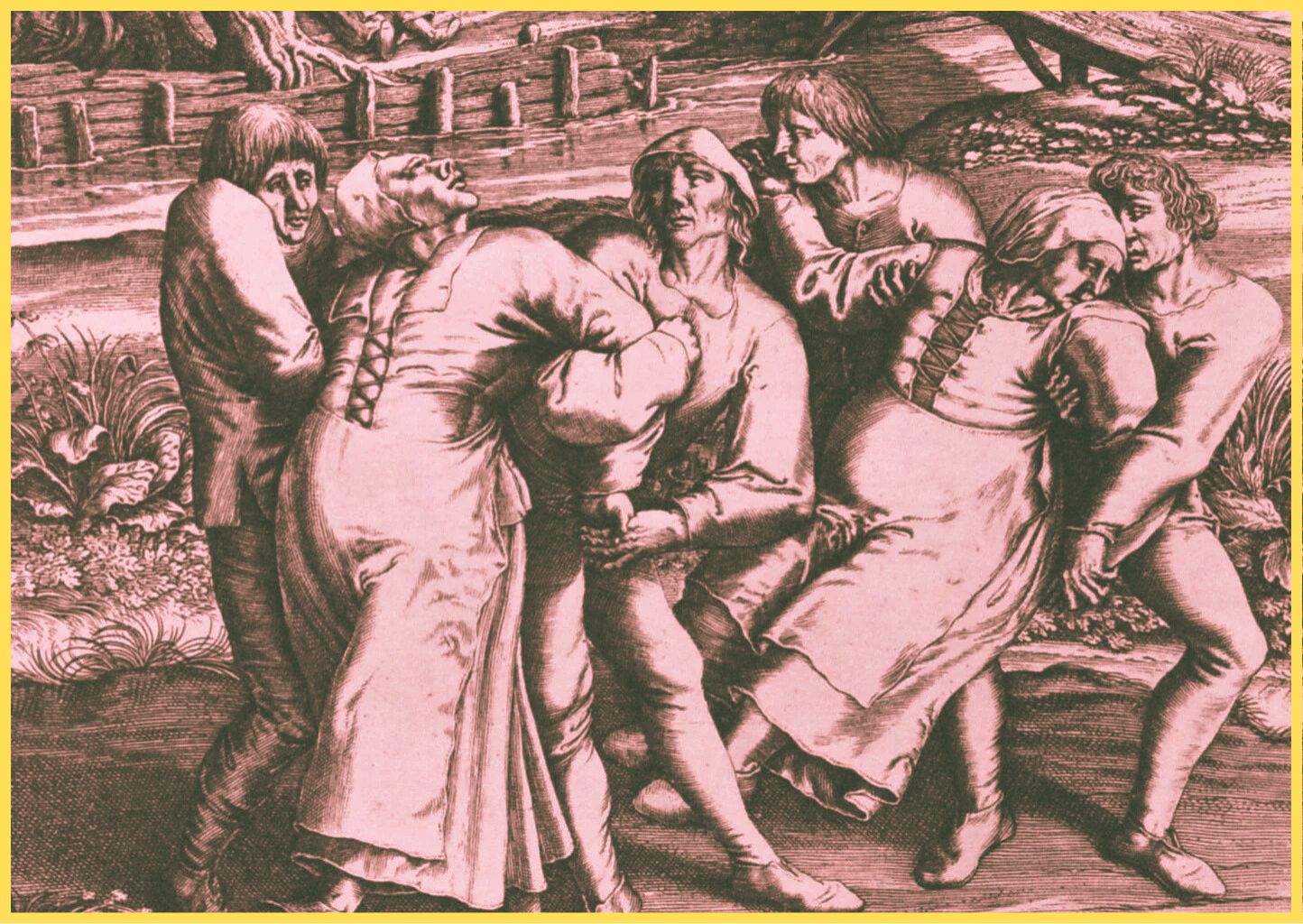In the sweltering heat of the summer of 1518, Strasbourg, a city within the Holy Roman Empire, witnessed an unsettling and improbable scene. A woman, known as Frau Troffea, stepped onto a narrow street and began to dance wildly to a rhythm… no one else could hear. What initially seemed like a strange eccentricity soon became a terrifying enigma. Frau Troffea danced relentlessly, her feet pounding the cobblestones, her body trapped in a frenzied motion. She danced for hours, then days, unable to stop, until sheer exhaustion took its toll.
This bizarre trance might have ended there. But within a week, around thirty other citizens were swept up in the same inexplicable dance. Soon, the number grew to a hundred. The streets of Strasbourg filled with bodies writhing as if possessed by an invisible force. Some danced until they collapsed from fatigue, while others died from exhaustion, their feet bloodied and their hearts overworked. The city seemed to have descended into madness. How did it come to this?
An Uncontrollable Mass Hysteria
Strasbourg’s authorities, bewildered by the situation, came up with an unexpected solution: they believed the dancers needed to “purge” themselves of the strange affliction. They set up stages and hired musicians to accompany the dancers. Even halls were reserved to allow the afflicted to dance out of the scorching sun. But these measures only worsened the crisis. The dancing grew even more intense. Some participants screamed in pain, while others, seemingly disconnected from reality, danced silently, their eyes vacant. Fear and confusion gripped the population.
The mystery deepened: how could a simple dance spiral into a deadly epidemic? The doctors of the time proposed various explanations. Some suggested it was caused by an imbalance of bodily humors aggravated by the heat, while others spoke of divine wrath or a curse.

Multiple Causes: From Hallucinogenic Fungi to Social Anxiety
Modern theories offer several explanations for this bizarre contagion. One of the most popular involves ergot fungus, which infects rye and produces hallucinogenic compounds similar to LSD. If ingested through contaminated bread, this fungus can cause convulsions, hallucinations, and strange behaviors.
However, this theory doesn’t convince all historians. For some, the 1518 dancing plague was instead a case of mass hysteria, fueled by a backdrop of social and economic despair. At the time, Strasbourg was enduring severe poverty, famine, and disease. The population was weighed down by stress and fear of divine judgment. Dancing to the point of collapse may have been a desperate form of expression, a way to release anxieties suppressed for too long.
Psychological theories suggest that Frau Troffea’s dance acted as a trigger in a society teetering on the brink of mental collapse. Onlookers, already vulnerable, subconsciously imitated her behavior, unleashing an unprecedented wave of emotional contagion.

The End of the Plague and Its Lessons
The epidemic ended as mysteriously as it began. After a month of frenzied dancing, the authorities ordered the afflicted to be taken to a church dedicated to Saint Vitus, the patron saint of dancers and epileptics. There, a religious ceremony was held. The dancers offered their shoes at the altar, prayed, and gradually, the madness subsided. Calm returned to the streets of Strasbourg, but the memory of this strange epidemic continued to haunt the collective consciousness.
The story of the dancing plague of 1518 still raises questions today about the fragility of the human mind under collective stress and deeply held beliefs. It reminds us that when confronted with the unknown, the mind can sometimes resort to mechanisms that defy reason.
This epidemic is more than just a historical curiosity: it reflects the tensions and fears of a society, a warning of what can happen when a community reaches its breaking point. For ultimately, beneath the surface of rationality, madness is never too far away…

